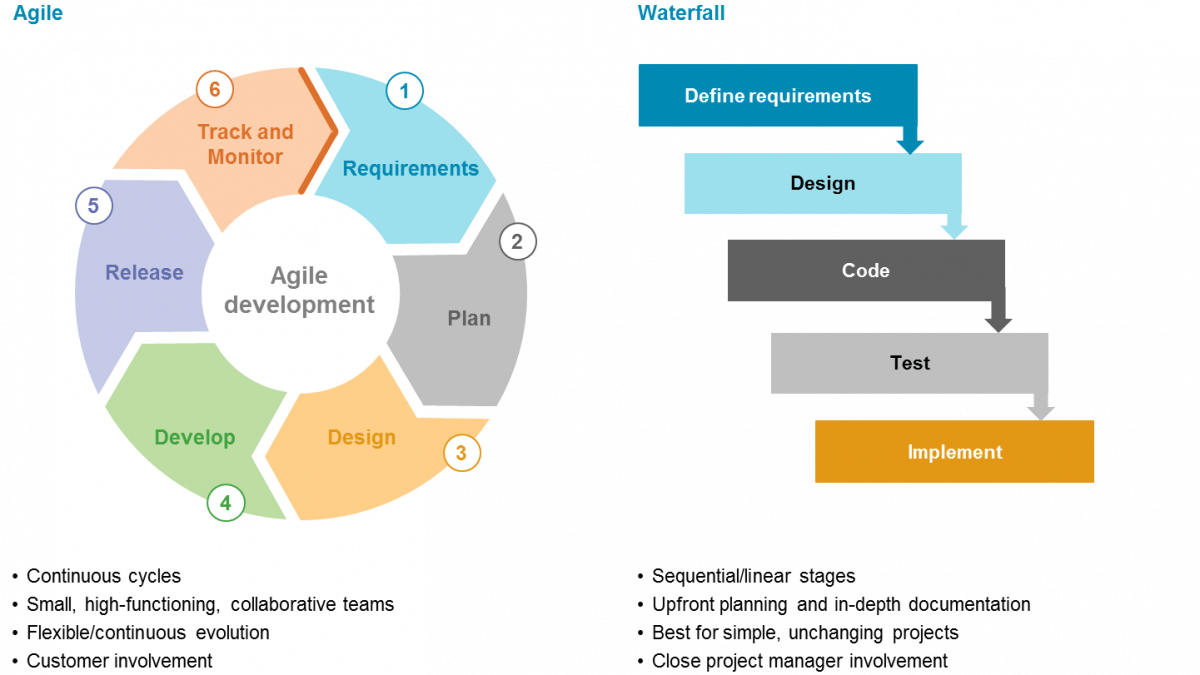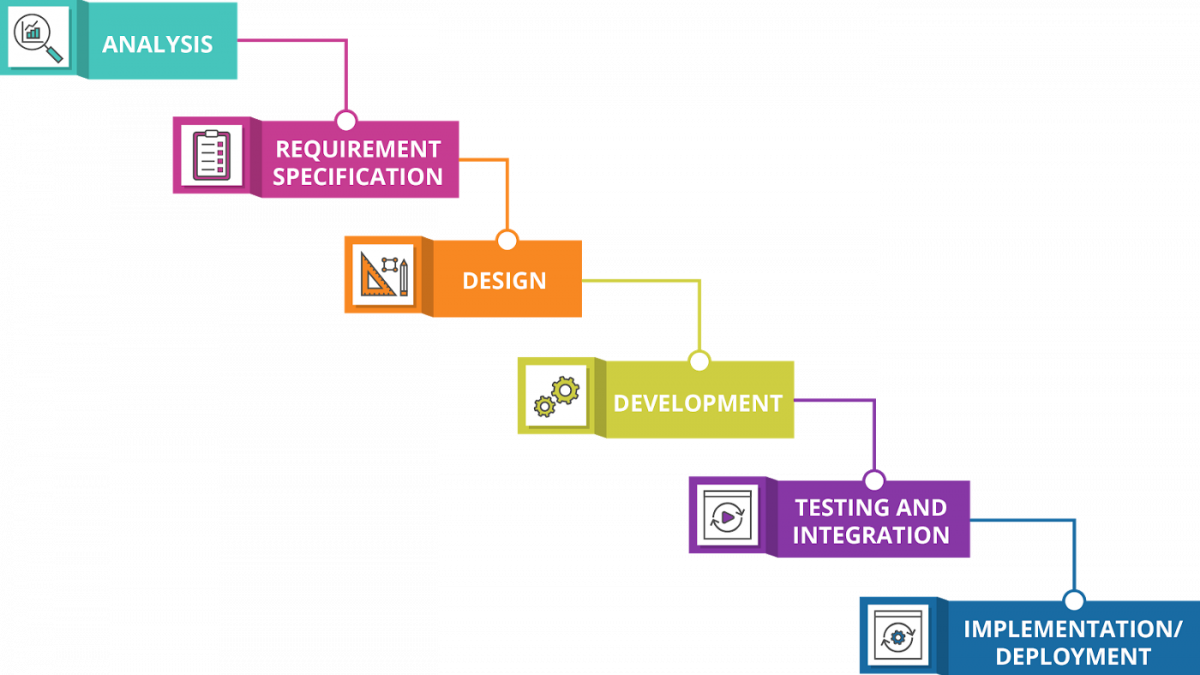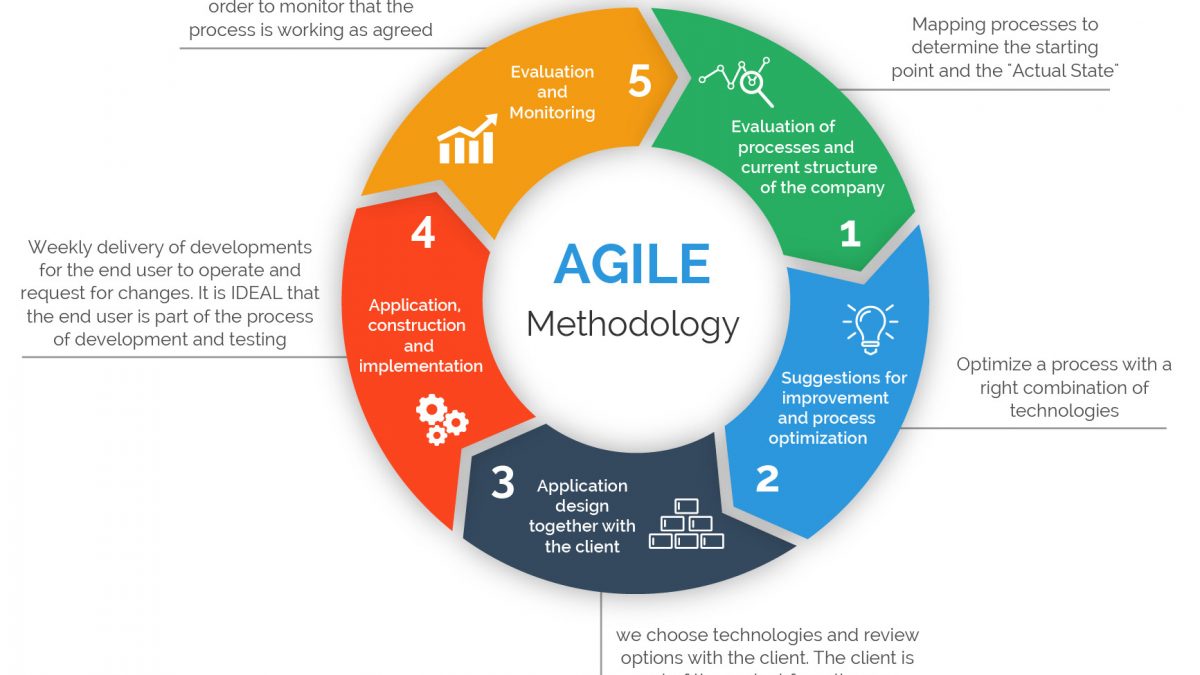
Agile and waterfall approaches are very beneficial for project management therefore it is important to know which approach is the most suitable for a project. Here below is a comparison between them in the form of similarities and differences.
Similarities
- Both Agile and Waterfall approaches have similar goals , which are to produce top quality products and to make clients happy and content.
- They have similar frameworks of collecting , designing , developing and testing.
- The foundation of the processes is planning, creating the project and monitoring it utilizing one of these two methods.
Differences
- The timeline is one of the biggest differences between the methods , for instance the waterfall approach has a fixed timeline. The whole concept is that from the beginning the whole project is mapped out (from start to finish). On the other hand the agile approach has a more flexible timeline since it experiments with different directions.
- Another difference is client involvement, both approaches involve their clients differently. For the waterfall approach, when the goal is established they do not involve their customers through the process since they do not need customer feedback. However the Agile approach includes its clients in every project development step.
- The Budget is allocated differently between the two approaches. The Waterfall approach usually has a fixed budget because the project is already planned since the beginning. For the agile approach the Budget is flexible since it is open to adaptation and change of direction is welcome.
For further information please consult:
https://www.edrawsoft.com/agile-vs-waterfall.html
https://www.forbes.com/advisor/business/agile-vs-waterfall-methodology/


